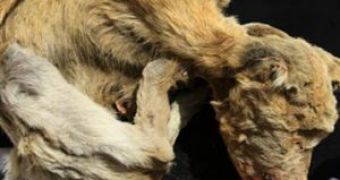Ancient inhabitants of Peru put a high price on their beloved hounds and treated them like members of the family.
Sonia Guillen, a Peruvian anthropologist, director of the Centro Mallqui, the Bioanthropology Foundation of Peru , and her team, have dug up, since 1993, eighty two dog tombs in pet cemetery plots, spread alongside human mummy tombs in a human cemetery of the Chiribaya people ( a pre-Inca population) in the fertile Osmore River valley, 540 miles southeast of Lima, Peru.
Chiribaya culture was an agricultural society that thrived from A.D. 900 to 1350, before the rise of the Inca Empire.
The dogs' mummies were buried on separate plots alongside their human owners, naturally preserved by the desert sands.
"We have found that in all the cemeteries, always, in between the human tombs there are others dedicated to the dogs, full-grown and puppies," Guillen said.
"They have their own grave, and in some cases they are buried with blankets and food."
The discovery shows the status possessed by the dogs in Chiribaya culture, which depended highly on their llamas herds, for their herding skills.
The dogs were named Chiribaya shepherds.
"They are dogs that were thanked and recognized for their social and familial contribution,'' anthropologist Sonia Guillen said."These dogs were not sacrificed.''
The question is if Peru's modern-day dogs do have something in common with this breed.
Guillen's team is currently trying to prove that the Chiribaya shepherds have descendants still living today, and that the dogs constitute a unique South American breed.
"This shepherd is still among us." she said.
"We have found very similar animals with the same characteristics in Peru's southern valleys and we are starting investigations to determine if we are dealing with a Peruvian dog.''
Some dog experts expressed caution.
Ermanno Maniero, who in 1985 achieved international recognition of the Peruvian hairless as a distinct ancient breed that evolved over more than 2000 years from Asian ancestors brought across the Bering Strait by the indigenous people of Peru, said Peru is full of breeds brought in recent centuries after the Spanish conquest of Peru and European colonization.
"We have found similar dogs'' to the Chiribaya shepherds, he said. "But it is better to take precautions before confirming the existence of a type of original animal.''
Ricardo Fujita, a genetics researcher at Lima's San Martin University, said the physical traits seems to be a mixture between today's' short-snouted, long-haired dogs and their possible Chiribaya ancestors.
But the problem remains still unsolved?
"We are conducting DNA analysis on the ancient dogs to compare them to the new ones, but it will be months before there are results for a final verdict,'' he said.
Photo credit: Mariano Bazo/Reuters

 14 DAY TRIAL //
14 DAY TRIAL //